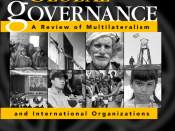Globalization, Nongovernmental
Processes of economic globalization under way since the early 1970s pose new regulatory dilemmas. The mismatch between global economic processes, on one hand, and national regulations, on the other, creates what Saskia Sassen aptly called a "regulatory fracture," stemming from the fact that "economic processes diverge from the model for which extant regulations were designed" (1998: 155).
Economic Globalization and Governance
Debates about how to deal with such a regulatory fracture are today at the forefront of law and society research on globalization and have given rise to a host of regulatory experiments around the world. A growing number of sociolegal analyses and institutional experiments emphasize nongovernmental approaches to regulation, that is, forms of economic and political coordination in which private organizations-from corporations to civic associations-take on regulatory tasks that earlier were reserved by the state. From this perspective, forms of global governance have the potential to solve some of the problems faced by national governments in the global economy.
The growing sociolegal literature on global governance entails a diagnosis of the regulatory dilemma, and a prognosis and a set of proposals to solve it. As for the diagnosis, scholars see three economic and political developments at the root of the regulatory problems associated with globalization. First, transnational economic processes operate at a scale that is increasingly at odds with that of national states' laws. In this context, the efficacy of national states' regulation decreases both because of its limited territorial reach and because of the strengthening of capital's "exit" option-that is, the heightened possibility that corporations will move operations to other countries to avoid stringent fiscal, environmental, or labor regulations.
Second, states face difficulties in applying their top-down, centralized regulatory logic to a highly decentralized economy dominated by a combination of market and network organizational logics. For...


